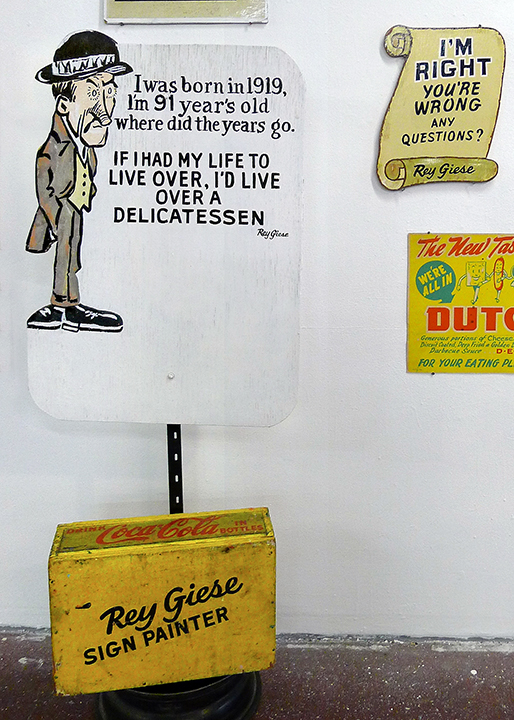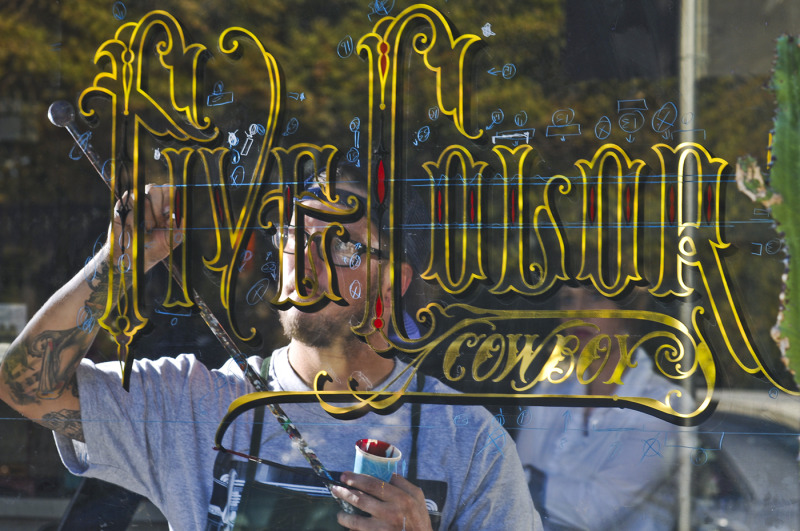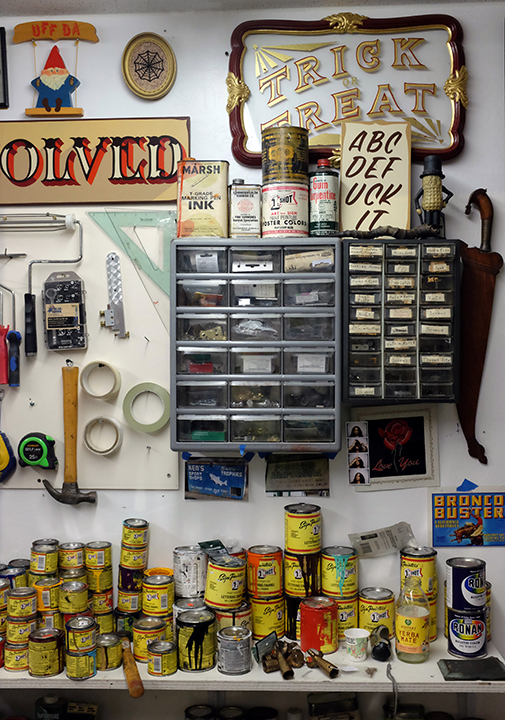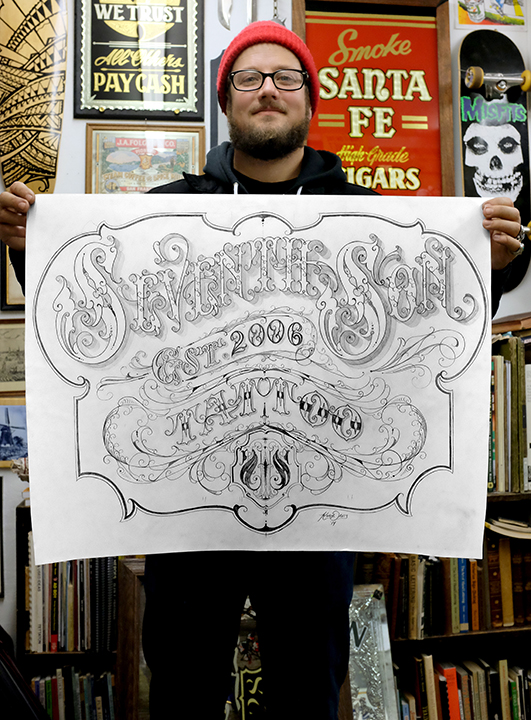For 73 years, Rey Giese painted the Valley of Heart’s Delight in letters, numbers and company logos. A skilled artisan whose craft was earned by years of apprenticeship, working as a journeyman and then finally branching out into his own business, Giese spent the 1930s and ’40s in what would come to be known as Silicon Valley honing his skills and personal style—one that he adhered to throughout his entire career, enduring passing trends and fickle tastes.
Giese was still working two weeks before his death, at the age of 93, in 2013. Whether or not he was aware of it, a new generation of sign painters revered him as a legend, and were committing themselves to keep the vanishing craft alive. In a tribute exhibition at KALEID Gallery in 2014, friends, clients and sign painters from up and down the California coast showed up with a variety of Giese artwork, vintage photos and plenty of good-humored stories. He was clearly beloved by all that knew him.

Ken Davis was one of them. An ardent admirer, Davis once met with Giese to inquire about purchasing one of his signs. Giese looked at him a bit confused, and said, “You’re a sign painter, why don’t you just make it?” Davis persisted: “I’d like something from you.” Giese just rolled his eyes, and said, “Okay.”
Davis was born in 1982, the very same year that the vinyl cutting plotter was established, thus causing the accelerated decline of the traditional sign trade; it was (and still is) faster and cheaper than hand-painting. Davis’ peers like to joke that he was born “in the ashes of sign painting,” but Davis has taken the torch from the purists of the past, like Rey Giese, and carried it into a digital age where its rarity is being appreciated as an art.
Davis grew up in Fremont, drawing replicas of comic-book logos like The Incredible Hulk and rusted brand names on the sides of freight trains that rolled through the neighborhood. An inclination toward subculture led him to visiting skateboard shops for their graphics, much like others might visit an art gallery. He felt his calling to do graphics and lettering for a living, but had no idea how to go about it. He was working in a shipping and receiving warehouse and really beginning to loathe it. “I started acting out and doing little subversive things to make me feel better about my day,” he says—things like building a secret skate ramp in the back of the warehouse and hiding out whenever he could. It was there that he read Two Year Autopsy by tattoo artist Grime. “All I could think,” recalls Davis, “was that this guy had it harder than most and is doing his dream… what’s my excuse?”




